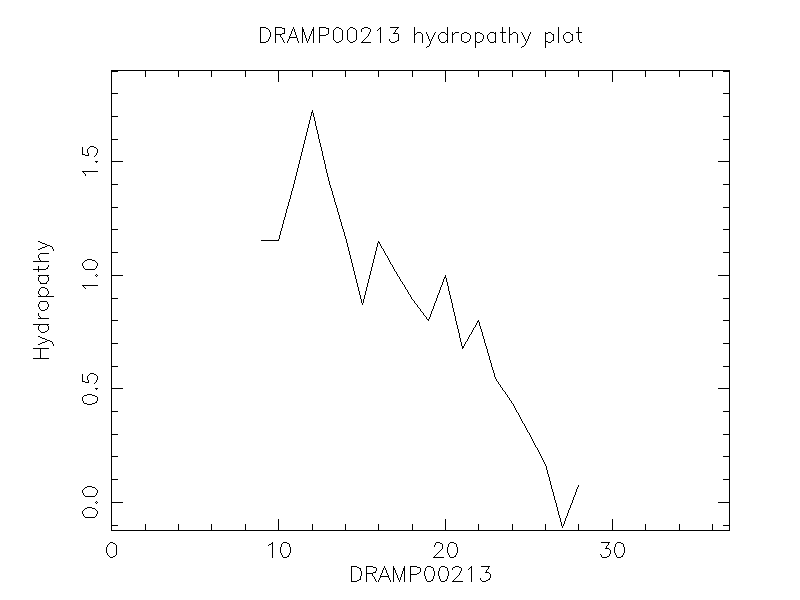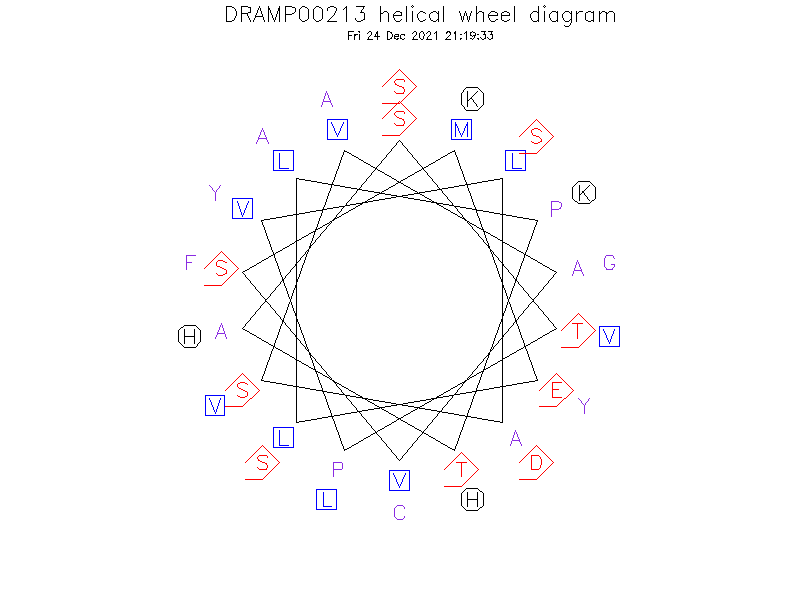General Information
Activity Information
-
Biological Activity
- Antimicrobial, Antibacterial
-
Target Organism
- Leuconostoc, Carnobacteria, Lactobacilli, Pediococci, Lactococci, Listeria monocytogenes, Listeria innocua, Staphylococcus, Bacillus cereus, Clostridium spp.
-
Hemolytic Activity
-
- No hemolysis information or data found in the reference(s) presented in this entry
-
Cytotoxicity
- No cytotoxicity information found in the reference(s) presented
-
Binding Target
- Cell membrane
Structure Information
-
Linear/Cyclic
- Cyclic
-
N-terminal Modification
- Deaminated
-
C-terminal Modification
- Cyclization between S32 and C37
-
Nonterminal Modifications and Unusual Amino Acids
- Two lanthionines(S32-C37,S23-C28)
-
Stereochemistry
- Mixed(D-Ala)
-
Structure
- Not found
-
Structure Description
- Not found
-
Helical Wheel Diagram
-
PDB ID
- None
-
Predicted Structure
- There is no predicted structure for DRAMP00213.
Physicochemical Information
-
Formula
- C173H273N43O52S3
Absent Amino Acids
- INQRW
Common Amino Acids
- S
Mass
- 3883.51
PI
- 6.66
Basic Residues
- 4
Acidic Residues
- 2
Hydrophobic Residues
- 15
Net Charge
- +2
-
Boman Index
- -4.01
Hydrophobicity
- 0.576
Aliphatic Index
- 94.86
Half Life
-
- Mammalian:1.9 hour
- Yeast:>20 hour
- E.coli:>10 hour
Extinction Coefficient Cystines
- 3105
Absorbance 280nm
- 86.25
Polar Residues
- 13
DRAMP00213

Comments Information
MOA
- The bactericidal activity of lantibiotics is based on depolarization of energized bacterial cytoplasmic membranes, initiated by the formation of aqueous transmembrane pores.
PTM
- Maturation of lantibiotics involves the enzymic conversion of Thr, and Ser into dehydrated AA and the formation of thioether bonds with cysteine. This is followed by membrane translocation and cleavage of the modified precursor.
Literature Information
- ·Literature 1
-
Title
- Purification and amino acid sequence of lactocin S, a bacteriocin produced by Lactobacillus sake L45.
-
Pubmed ID
- 1872611
-
Reference
- Appl Environ Microbiol. 1991 Jun;57(6):1829-1834.
-
Author
- M¸rtvedt CI, Nissen-Meyer J, Sletten K, Nes IF.
- ·Literature 2
-
Title
- In vivo conversion of L-serine to D-alanine in a ribosomally synthesized polypeptide.
-
Pubmed ID
- 7961627
-
Reference
- J Biol Chem. 1994 Nov 4;269(44):27183-27185.
-
Author
- Skaugen M, Nissen-Meyer J, Jung G, Stevanovic S, Sletten K, Inger C, Abildgaard M, Nes IF.

